Find the position of the image formed by the lens combination given in the following figure :
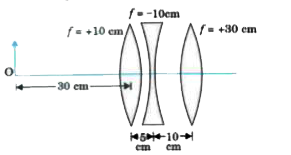
For the first convex lens of focal length +10cm
we have, 1v1−1u1=1f1
⇒ 1v1=110−130=115
⇒ v1=15cm
This image formed by the first lens acts as an object for the second lens of focal length −10cm. It will be at a distance of (15−5)=10cm to the right of the second lens.
This real image obtained from the first lens will serve as a virtual object for the second lens, which means that the rays appear to come from it. So, for the second lens,
1v2−1u2=1f2
⇒ 1v2−110=−110 ⇒v2=∞
The virtual image is formed at an infinite distance to the right of the second lens. This will act as an object for the third lens. So,
1v3−1u2=1f3
⇒ 1v3−1∞=130
⇒ v3=30cm
∴ This final image is formed at a distance of 30 cm to the right of the third lens.
Topper's Solved these Questions
- BOOK - MODERN PUBLICATIONCHAPTER - RAY OPTICS AND OPTICAL INSTRUMENTSEXERCISE - PRACTICE PROBLEMS (1)13videos
RAY OPTICS AND OPTICAL INSTRUMENTS
- BOOK - MODERN PUBLICATIONCHAPTER - RAY OPTICS AND OPTICAL INSTRUMENTSEXERCISE - PRACTICE PROBLEMS (2)9videos
RAY OPTICS AND OPTICAL INSTRUMENTS
- BOOK - MODERN PUBLICATIONCHAPTER - NUCLEIEXERCISE - CHAPTER PRACTICE TEST FOR BOARD EXAMINATION15videos
NUCLEI
- BOOK - MODERN PUBLICATIONCHAPTER - SEMICONDUCTOR ELECTRONICS METERIALS DEVICES AND SIMPLE CIRCUITS EXERCISE - CHAPTER PRACTICE TEST FOR BOARD EXAMINATION12videos
SEMICONDUCTOR ELECTRONICS METERIALS DEVICES AND SIMPLE CIRCUITS
Similar Questions
Find the position of the image formed by the lens combination given in Fig.
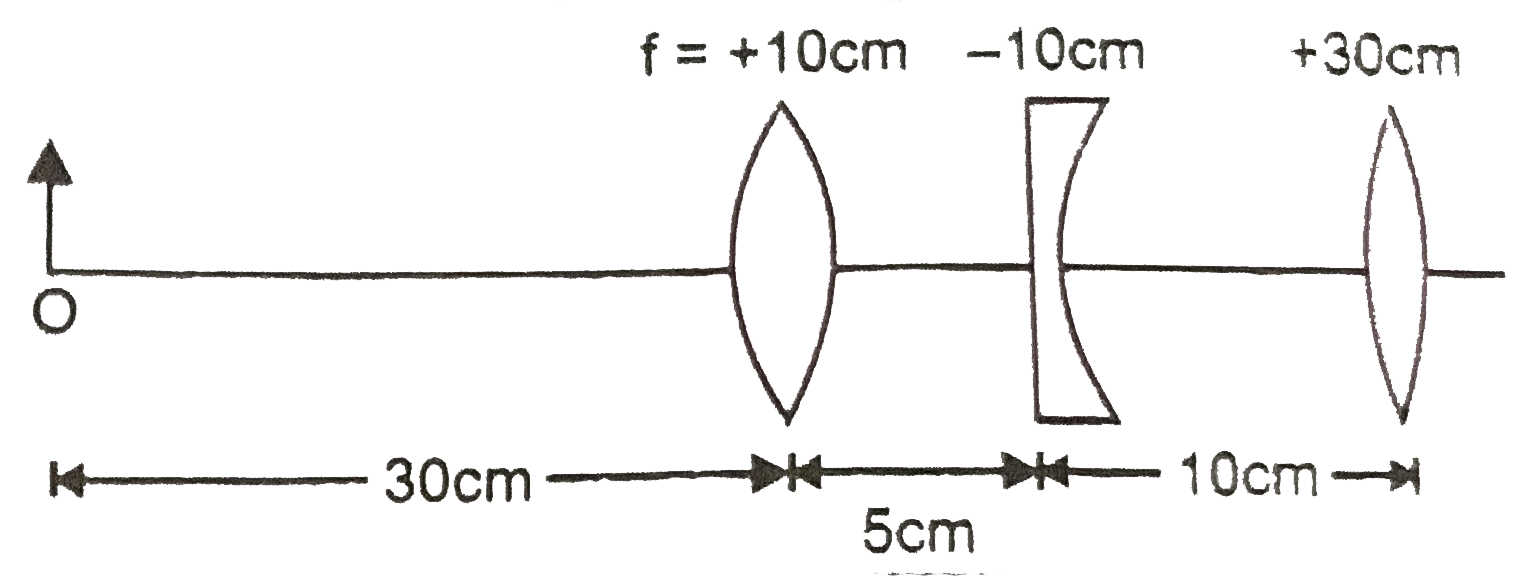 .View Solution
.View Solution(a) Using the ray diagram for a system of two lenses of focal lengths f1andf2 in contact with each other, show that the two lens system can be regarded as equivalent to a single lens of focal length f, where
1f=1f1+1f2
Also write the relation for the equivalent power of the lens combination.
(b) Determine the position of the image formed by the lens combination given in the figure.
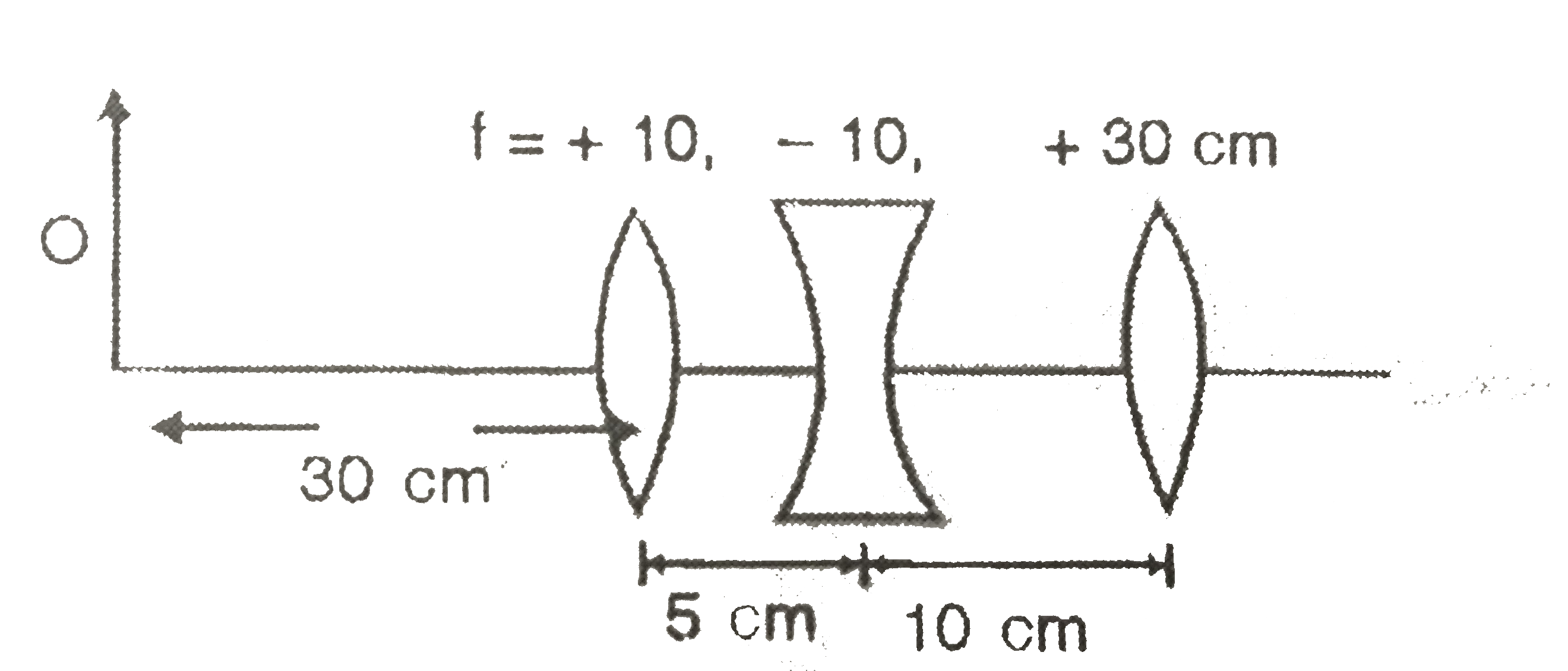 View Solution
View Solution
Knowledge Check
- Question 1 - Select One
The image formed by a convex lens
Ais always virtualBis always realCis always virtual if object is realDis always real if object is virtual - Question 2 - Select One
Find the size of the image formed in the situation shown in figure.
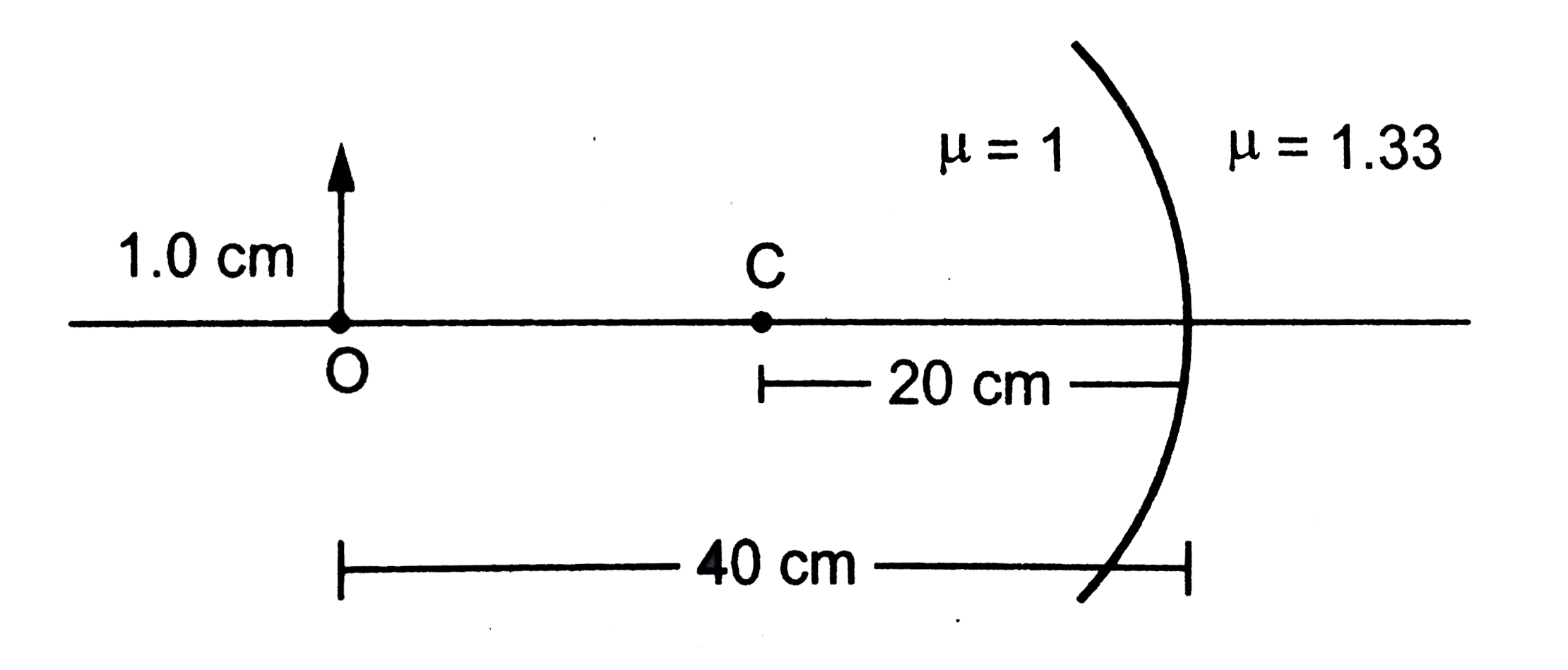 A−0.6cmB+0.6cmC+0.1cmD+1.2cm
A−0.6cmB+0.6cmC+0.1cmD+1.2cm - Question 3 - Select One
If the optic axis of convex and concave lenses are separated by a distance 5mm as shown in the figure. Find the coordinate of the final image formed by the combination if parallel beam of light is incident on lens. Origin is at the optical centre of convex lens
 A(25cm,0.5cm)B(25cm,0.25cm)C(25cm,−0.5cm)D(25cm,−2.5cm)
A(25cm,0.5cm)B(25cm,0.25cm)C(25cm,−0.5cm)D(25cm,−2.5cm)
A convex lens of focal length 20cm is placed coaxilly with a convex mirror of radius of curvature 20 cm. The two are kept 15 cm apart. A point object is placed 40 cm in front of the convex lens. Find the position of the image formed by this combination. Draw the ray diagram showing the image formation.
View SolutionFind out the position and type of image formed.
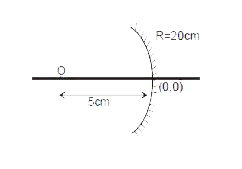 View Solution
View SolutionFind out the position and type of image formed.
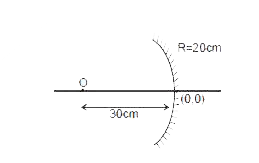 View Solution
View Solutionwhat is the position and nature of image formed by lens combination shown in figure ? (f1,f2 are focal lengths)
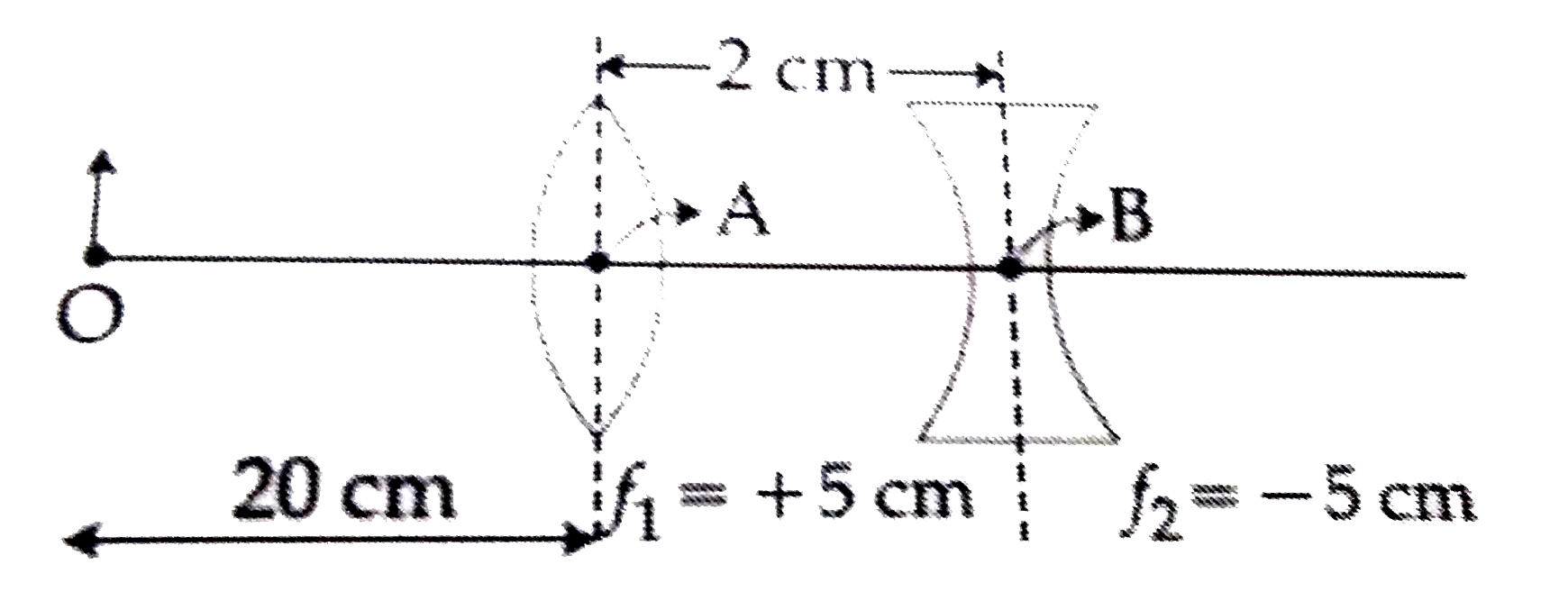 View Solution
View Solution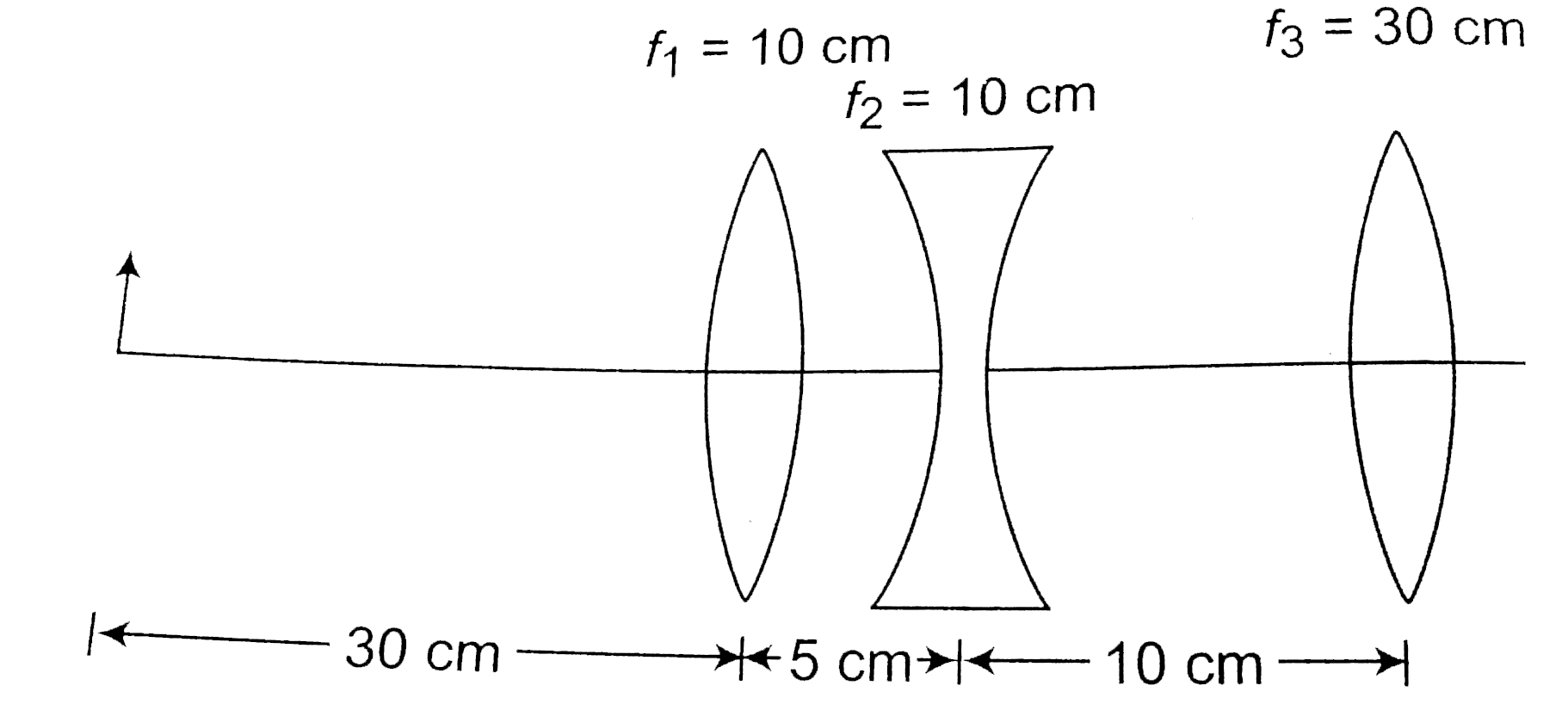
The position of fical image formed by the given lens combination from the third lens will be at a distance of f1=+10cm,f2=−10cm,f3=+30View Solution

